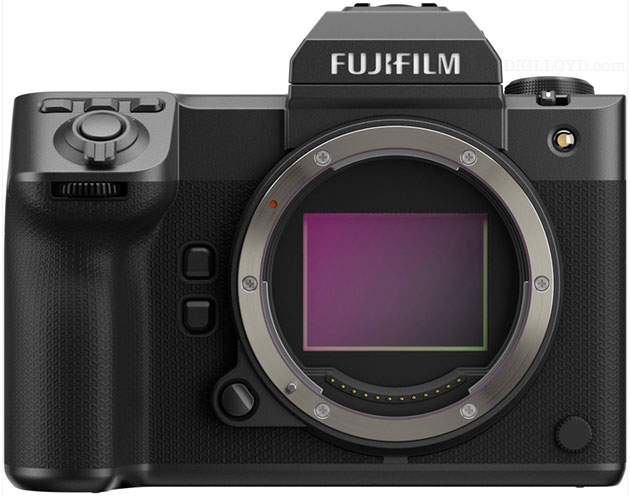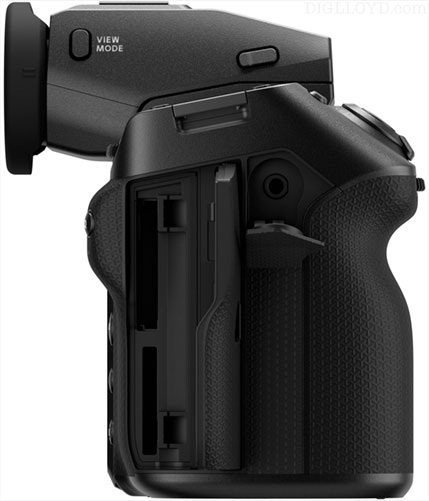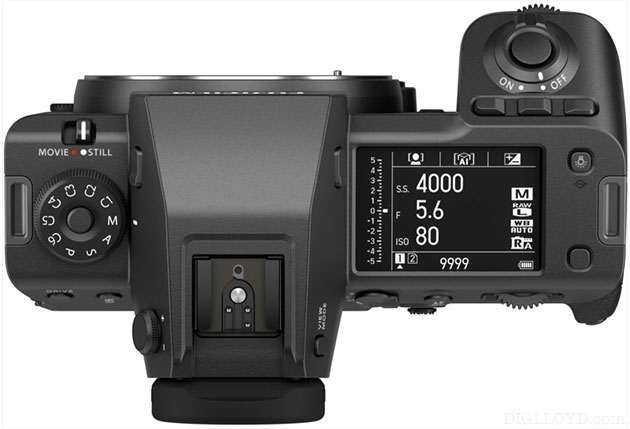Fujifilm GFX100 II: Many Improvements Even for Still Photography
I will review the GFX100 II as a priority when the B&H Photo loaner camera arrives (late September if all goes well).
The Fujifilm GFX100 II seemingly exists mainly to extend video capabilities, which I won’t discuss here, as I am not a video shooter.
But it includes many worthwhile upgrades for still photography as well. The improved haptics and faster operation will make the usage experience much more enjoyable than the GFX100/GFX100S. The five-year technology gap vs Sony has seemingly been closed, at least in key areas of haptics.

- Improved sensor and processing engine;
- ISO 80 Standard Sensitivity for reduced noise with 16-bit images.
- 9.44-million-dot EVF with 1.0x magnification WOW—1.0X super nice!
- 120 fps Live View
- Blackout-free shutter.
- Improved (?) IBIS.
- Sensor readout transit time is apparently cut in half, super important for “jello” effects both for video and still photography.
- CFExpress Type B card slot for 5X faster downloads.
- Three Fn buttons at top.
- Redesigned microlenses improve light coverage at the corners of the sensor, delivering better image quality and increased AF accuracy at the periphery of the lens.
- Pixel shift is now 20-shot, a really bad joke for field work, still a huge PITA.
One thing I do not understand is “continuous frame rate of up to 8fps with the mechanical shutter”: what is the frame rate for electronic shutter, required for Focus BKT?
Yet a single firmware fix for extremely damaging bugs would be my top choice over all these features combined.
Also unveiled were:
Fujifilm launches Mirrorless digital camera “FUJIFILM GFX100 II”
September 12, 2023
Flagship model featuring the newly-developed high-speed 102MP sensor and the latest image processing engine Delivering highest burst-shooting, AF, video performance and stabilization in the history of GFX Series to broaden genre coverage.
The GFX100 II features the newly-developed 102MP high-speed image sensor “GFX 102MP CMOS II HS” and the high-speed image processing engine “X-Processor 5” to deliver up to double the signal readout speed compared to the current model*2. It is a new flagship model that delivers the highest burst-shooting, AF and video performance in the history of GFX Series.'
 Fujifilm GFX100 II, card slots
Fujifilm GFX100 II, card slotsThe GFX100 II boasts superior image quality thanks to the use of the large format sensor. It is the first GFX Series mirrorless digital camera that features the AI-based subject-detection AF, developed with Deep Learning technology, as well as the latest predictive AF algorithm. The burst mode performance has also been enhanced from the current model*3 to 8.0 frames per second*4 and the stabilization performance has been improved to eight-stop*5 five-axis to broaden the scope of genres for the GFX Series from fashion, commercial and landscape categories to sports and news photography, where high-speed performance is essential.
The use of the new sensor has also led to significant enhancement of video recording capability. The GFX100 II is the first GFX Series camera that supports 8K/30P video, and can also record 4K/60P 4:2:2 10-bit video internally. Furthermore, it offers the new “Video Format” modes to enable video recording in multiple formats including Premista*6, 35mm, and anamorphic (35mm) with the mount adapter. Video recording in a variety of situations is catered to, thanks to the enhanced sensor readout speed and the tracking AF, which automatically tracks a subject to keep it in focus.
The camera body is equipped with an Ethernet port as well as HDMI Type A and USB-C terminals to broaden connectivity with external devices significantly for diverse peripheral combinations. In addition, the high-magnification, high-definition EVF that ensures high visibility and the functional beauty of the body design support a comfortable shooting experience for professional photographers and filmmakers.
- *1 An image sensor that measures 55mm diagonally (43.8mm x 32.9mm) and is approximately 1.7 times larger than a 35mm full-frame sensor
- *2 Compared to the sensor used in the FUJIFILM GFX100 and FUJIFILM GFX100S
- *3 Mirrorless digital camera “FUJIFILM GFX100”
- *4 When using the mechanical shutter
- *5 Compliant with CIPA in pitch / yaw directions when mounted with the FUJINON Lens GF63mmF2.8 R WR
- *6 Fujifilm’s zoom lenses for cinema cameras
Thank you for buying using links on this site which helps both me and B&H Photo, which generously provides the loaner cameras and lenses.
1. Product features
(1) Highest burst shooting and AF performance in the history of the GFX Series
- The GFX100 II is equipped with the newly-developed 102MP image sensor “GFX 102MP CMOS II HS,” which boasts up to double the signal readout speed compared to the current model to enable continuous shooting of up to 8.0 frames per second. Users can enjoy burst shooting at very quick intervals completely stress-free thanks also to reinforced buffer memory. In the field of sports photography, previously difficult with past GFX Series models, the GFX100 II seizes decisive photo moments while preserving the high definition and high image quality synonymous to the large format sensor.
- The use of an improved algorithm has evolved the Face / Eye AF and introduced the AI-based subject-detection AF, developed with deep-learning technology to detect animals, birds, cars, motorcycles, bicycles, airplanes, trains, insects and drones*7. A targeted subject is automatically tracked while kept in focus so that users can focus on shutter opportunities and framing. The evolved predictive AF algorithm provides added ease to users in sports photography, for example, which requires advanced tracking capability to track a subject that moves quickly within the frame.
- The camera is equipped with a high-magnification and high-definition 9.44-million-dot EVF with 1.0x magnification. It suppresses parallax and distortion which typically occurs when an eye position becomes displaced while using the viewfinder, thereby providing stellar visibility. The EVF boasts smooth refresh frame rate of approx. 120fps to accurately identify a subject’s fast movements.
*7 Use the “Bird” setting to detect insects and the “Airplane” setting to detect drones.
 Fujifilm GFX100 II, top view
Fujifilm GFX100 II, top view(2) Broader scope of stills expressions
- Improvement to the pixel structure has boosted the new sensor’s saturated electrons, thereby enabling the use of ISO80 as a non-extended sensitivity. When the sensor sensitivity is set at ISO80, the camera can capture images at greater dynamic range and lower noise than with the previous model*8.
- The new sensor’s micro lenses are improved to increase light use efficiency at the sensor’s edges, thus improving image quality and AF accuracy at the edges over the previous model.
- The GFX100 II comes with a new Film Simulation mode called “REALA ACE,” which offers faithful color reproduction and high-contrast tonality. Users can use from 20 Film Simulation modes to give images a diverse range of distinctive tones, as if they are choosing a suitable photo film.
- The camera features the Pixel Shift Multi-Shot function, which enables 4x resolution and faithful color reproduction. The function controls the In-Body Image Stabilization (IBIS) mechanism at the advanced level to shift the image sensor by 0.5 pixel at a time and shoot 16 RAW images in a quick succession. The dedicated software “Pixel Shift Combiner” is then used to combine the 16 RAW files to generate a 400MP image. This is a perfect choice for commercial photography or digital archiving of cultural assets.
*8 When recording at 16-bit RAW
(3) Extensive video performance that caters to the needs of professional video production
- This is the first GFX Series model capable of recording 8K/30P video. It can also record 4K/60 4:2:2 10-bit video internally, demonstrating significant improvement in video performance thanks to the use of the new sensor.
- Users can film a moving subject naturally due to the increased sensor readout speed and suppression of the rolling shutter effect. The non-extended ISO100 is also available in the video mode to deliver even higher image quality in video footage.
- The GFX100 II supports three Apple ProRes*9 codecs, i.e. Apple ProRes 422 HQ, Apple ProRes 422 and Apple ProRes 422 LT. When shooting in Apple ProRes, the camera can use proxy video recording such as Apple ProRes 422 Proxy, which reduces video editing workload to streamline the overall workflow from filming to postproduction.
- The camera features Video Format modes, enabling video recording in multiple formats including Premista, 35mm, and anamorphic (35mm) with the mount adapter.
- The tracking AF function for video recording has been added. Users can touch the screen to specify a subject to be tracked while filming in the AF-C + Wide / Tracking AF mode. This allows the camera to track the right subject in situations where multiple subjects are in the frame.
- This is the first GFX Series camera that features F-Log2 with dynamic range expanded up to 14+ stops*10. This enhancement enables video recording with enriched tonality, thereby broadening post-production potential significantly.
- The GFX100 II can output up to 8K/30P 12-bit video in RAW data via HDMI. The camera can record video in the Apple ProRes RAW format when used with the NINJA V+ monitor by ATOMOS, and in the Blackmagic RAW format when used with the “Video Assist 12G” monitor by Blackmagic Design.
- The camera supports timecode synch with ATOMOS AirGlu™*11 BT. This enables seamless timecode synching with multiple cameras, meeting demand from various video production sites.
*9 Apple ProRes is a trademark of Apple Inc. registered in the United States and other countries.
*10 When using the F-log2 D Range Priority mode, according to in-house measurement by Fujifilm
*11 AirGlu™ is a trademark or registered trademark of ATOMOS.(4) Extensive system expandability
- The camera body is equipped with an Ethernet port as well as HDMI Type A and USB-C terminals to broaden connectivity with external devices significantly for diverse peripheral combinations.
- An external SSD can be connected via USB-C to record stills and video data directly in the external SDD in any mode or format including 4K/60P and 8K/30P*12.
- The camera supports the cloud service “Frame.io Camera to Cloud” so that Apple ProRes Proxy files and a variety of other video files can be uploaded directly to Frame.io, thus dramatically streamlining the workflow from shooting to editing.
- The camera is equipped with dual card slots supporting CFExpress™ Type B*13 and SD cards. The use of a CFExpress™ Type B card with a fast write speed brings out the full video performance of the GFX100 II.
- IPTC meta data*14 can be added to images as they are shot. The meta data can be checked and edited in the digital camera app “FUJIFILM XApp.”
*12 Some of the modes may not be supported depending on the type of SSD. Check Fujifilm’s website for a list of supported SSDs.
*13 Check Fujifilm’s website for a list of supported cards. CFexpress is a trademark or registered trademark of the CompactFlash Association.
*14 IPTC meta data refers to meta data contained in digital images compliant with the standards set by the IPTC (International Press Telecommunications Council).(5) Hardware that provides powerful shooting support and design that epitomizes functional beauty
- The GFX100 II has a new IBIS mechanism. It uses image information to detect camera shake for enhanced stabilization accuracy to achieve up to eight-stop five-axis stabilization performance, the best among Fujifilm cameras. Users can shoot hand-held with ease even in low light situations such as night landscape.
- The camera body has been designed with multiple improvements over previous models in pursuit for practicality. The new BISHAMON-TEX™*15 texture is used to maximize the camera’s grip when hand-held in various angles. The top panel is slightly slanted toward a user so that camera settings can be checked with minimal eye movement. The sub-LCD monitor at the top is larger than previous models with updated GUI design for enhanced visibility.
- The operability of various buttons has been improved, and three Fn buttons with advanced operability have been added to the top of the grip so that users can adapt to change of shooting conditions smoothly.
*15 BISHAMON-TEX is a trademark or registered trademark of FUJIFILM Corporation.
2. Optional accessories
(1) Vertical battery grip “VG-GFX100 II” (designed for the GFX100 II)
- This battery grip is dust- and weather-resistant and capable of operating at temperatures as low as -10℃. It can hold two of the large capacity battery “NP-W235.”
- Buttons are placed at accessible places for shooting as easily and comfortably as when the camera is held horizontally.
(2) Cooling fan “FAN-001” (designed for the GFX100 II, X-H2S, X-H2 and X-S20)
- A cooling fan that assists video filming for extended duration or under high-temperature environment
- It can be attached to the rear side of the camera body and receive power completely cable-free to extend the duration of continuous video filming at high temperatures without concerns of heat-related malfunction.
(3) EVF tilt adapter “EVF-TL1” (designed for the GFX100 II, GFX100 and GFX 50S)
- By mounting this accessory between the camera body and EVF unit, the mounting angle of the EVF can be changed to angles from 0°∼90° when shooting horizontally and from -45°∼+45° when shooting vertically. Doing so will allow users to shoot from various angles while using the viewfinder, greatly increasing freedom of camera positions and the range of expressions.





























